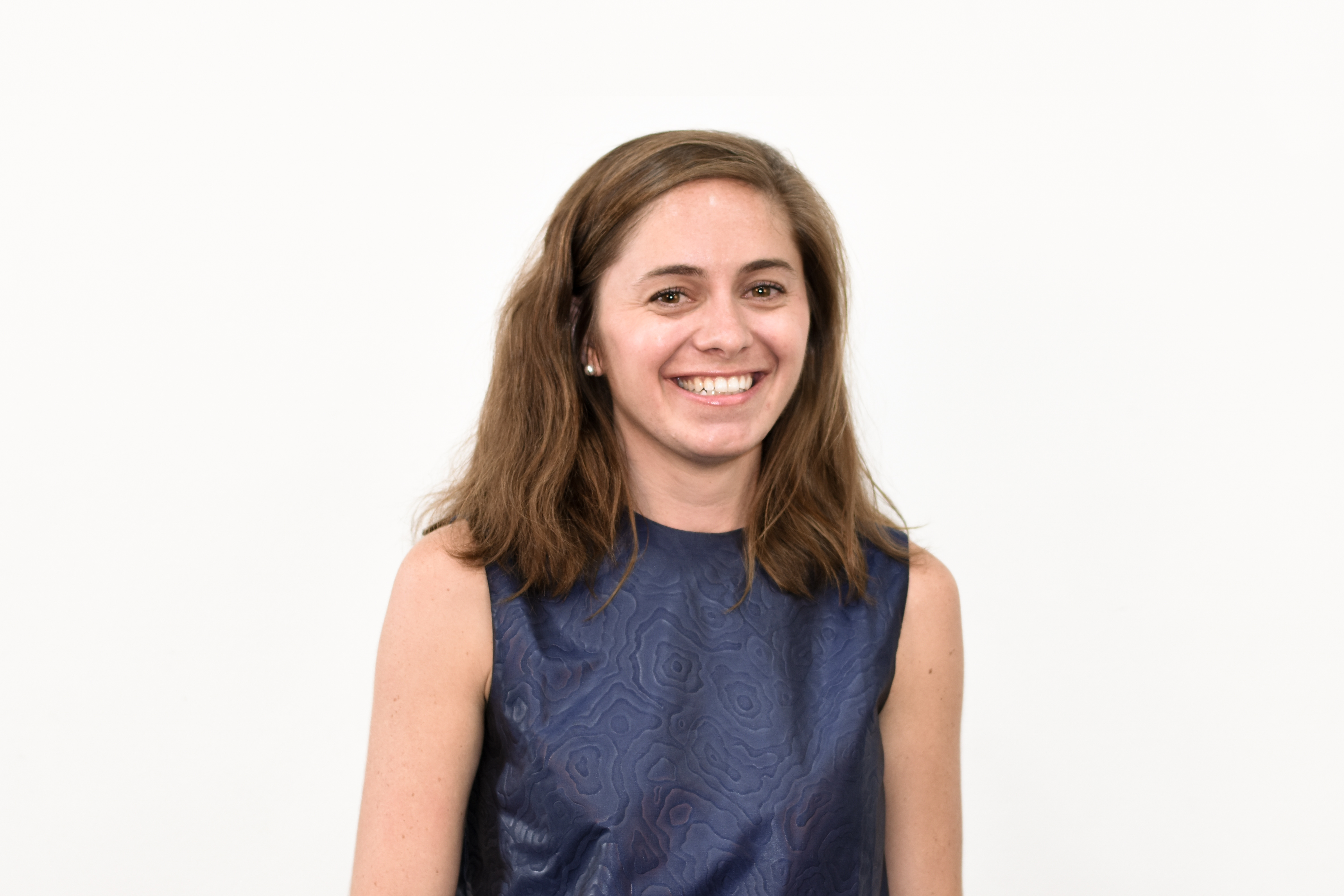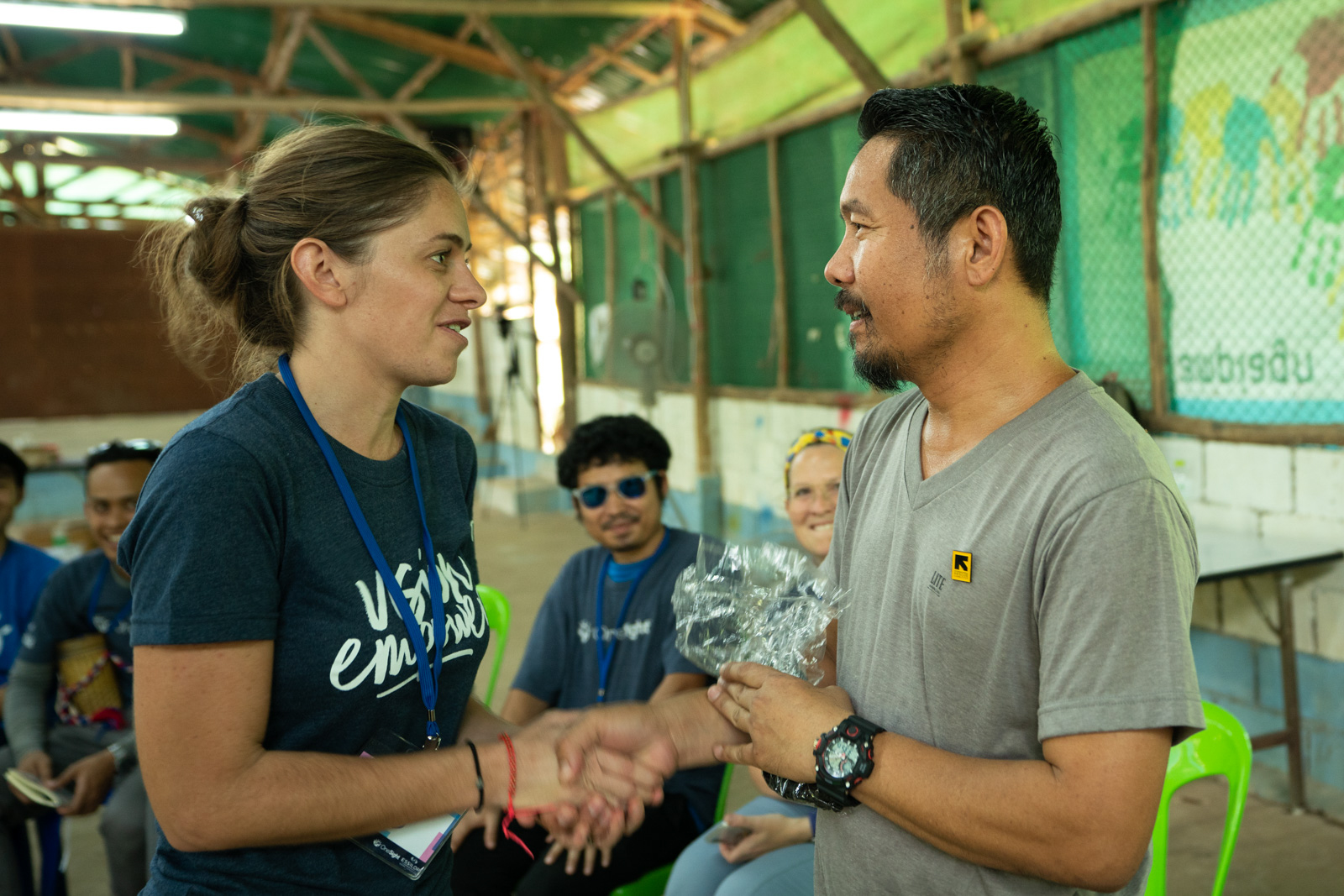
OneSight’s Manager or Programming for South and Southeast Asia, Maud Zeller, was recently named the 2019 IAPB Eye Health Hero for her tremendous efforts to bring vision care access to those in Asia. She’s passionate about bringing quality vision care to those in great need and is willing to go the extra mile to ensure that everyone, no matter their background, has access to an eye exam and a pair of glasses.
Maud has quickly established herself as a leader in providing vision care to underserved and displaced populations. She has been instrumental in leading OneSight’s Thailand Border Region Project and has built a complete plan along the Thai/Myanmar Border to provide access to vision care to those within temporary shelters and refugee camps. Working hand in hand with the International Rescue Committee (IRC), her efforts there have led to vision care now being provided to two of the seven refugee camps that the IRC has overseen on in the region, with plans to provide further access to two more camps in 2020.
Maud is an expert at bringing key partners together within the regions she works. In addition to working with organizations like the IRC in Thailand, she is also working closely with a team from BRAC to finalize the rollout of twenty vision centers across Bangladesh. These center will provide vision care access to those with the greatest need and will serve the need in Cox’s Bazar. In addition to her work with refugees and displaced people in Thailand, Maud has been working to provide permanent access to vision care in the region through building capacity at the Mae Tao Clinic in Mae Sot, Thailand. Her efforts at the clinic are helping to develop further training for local staff and refurbish the facilities with better equipment, creating a greater overall experience for patients visiting the clinic.

“I love my role because I get to think from a strategic partnership level and see how everything can come together to make the right impact. I work with a strong, passionate team who empowers you and lets you innovate to make sure the impact you want is feasible in each context where we work with our partners. This balance is what makes us work with incredible people and partners combining global and local expertise without compromising the quality of service and ensuring a strong return on investment from every dollar provided for each project. I am extremely proud to be part of this organization.”
We asked Maud a few questions about her work, what challenges she’s had to overcome and what drives her. Here’s what she said:
What does a typical work day look like for you?
It takes many people and organizations to build successful missions that deliver a powerful impact. My weekly and day-to-day responsibilities are centered around reaching out to different partners to help coordinate programming within a region. When I’m in the office in Singapore (where I am based), my day starts with meeting with our global team, followed by the Australia team, and then finally with the ambassadors that are helping us create local programming in the region. My mornings are all about answering questions and helping others, while my afternoons are about collecting information to continue to implement, update or adjust programming plans.
When I am in the field, my goal is to understand who the beneficiaries are, determine how we should select or pre-screen them, where exactly we are going to do our next mission and the implications it has from a logistics perspective. In a nutshell, I plan for the unexpected. That means taking the same model and rebuilding it so that it can address the unique context that every mission requires. Planning, thinking globally and practically, while staying true to our objective is how I plan out my days. No day is ever the same!
Where does your passion for vision care stem from?
I have a background working in the optical industry as Luxottica’s Business Brand Manager for South East Asia. I was lucky enough to participate in a OneSight clinic a few years ago, opening my eyes (no pun intended) and understanding of what it’s like to be unable to see clearly. I don’t wear glasses, so seeing someone see clearly for the first time – the change in their behavior and facial expression – made me really understand the impact that sight can have. This is the moment in which I truly fell in love with the cause and wanted to contribute to closing the vision care gap.
What has been the most challenging and the most rewarding aspects of working on the Thailand Border Project?
The most challenging aspect has been coordinating with multiple organizations within the sensitive context of serving displaced people – whether or not they are migrants or refugees. Developing solutions that deliver quality and quantity care with limited hours in temporary shelters, determining how to communicate and gain trust locally, all while calling on others to support you in addition to the multiple projects they lead in an effort to help the community here.
The most rewarding aspect is our vision becoming a reality. This project all started with a vision and a rough 3-year plan, knowing that I needed perspective to understand what could be possible and rallying others around the cause. 2020 will be the 3rd year of the project, in which we will have been to 3 different camps, significantly strengthened the capability of Mae Tao Eye Clinic and started to build a process to detect vision impairment among school children. All of our hard work is bringing quality vision care access to the 200,000 displaced people around Mae Sot.
How did you go about building an ambassador program from the ground up?
I used the following approach:
1. Identify people who are passionate about our cause and want to be part of expanding OneSight’s impact
2. Based off of our goals, identify possible projects in each country where organizations are interested in partnering with us
3. Lead discussions with appointed ambassadors and align on who should lead each project
4. Ensure each ambassador has the training and guidance needed to achieve their vision
What would you consider to have been your most challenging project in 2019 and why?
The most challenging project was conducting a two-week charitable clinic in the biggest temporary shelter, which holds up to 40,000 people. In just two weeks, we had to screen as many people as we could and provide quality eyecare with limited time and limited team in a multilingual environment (individuals onsite spoke English, Thai, and/or Burmese). That meant that I had to ensure that a team of 50 people were able to work together in tough conditions to screen an average of 200 patients per day.
What are you most excited for in 2020?
I’m excited to continue to further develop the Thailand Border Region Project, leading a mission in one of the most remote temporary shelters with the support of the International Rescue Committee (IRC) and support of Mae Tao Eye Clinic to adopt a vision center approach. I’m also eager to help further our presence in the Middle East, working with the Princess Alia Foundation, the Ministry of Health and Alpha Optical in Jordan to serve Syrian refugees and Jordanian locals alike.
Learn more about Maud’s work and how she has navigated cultural differences.